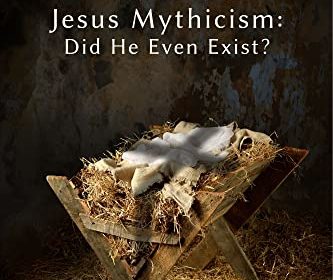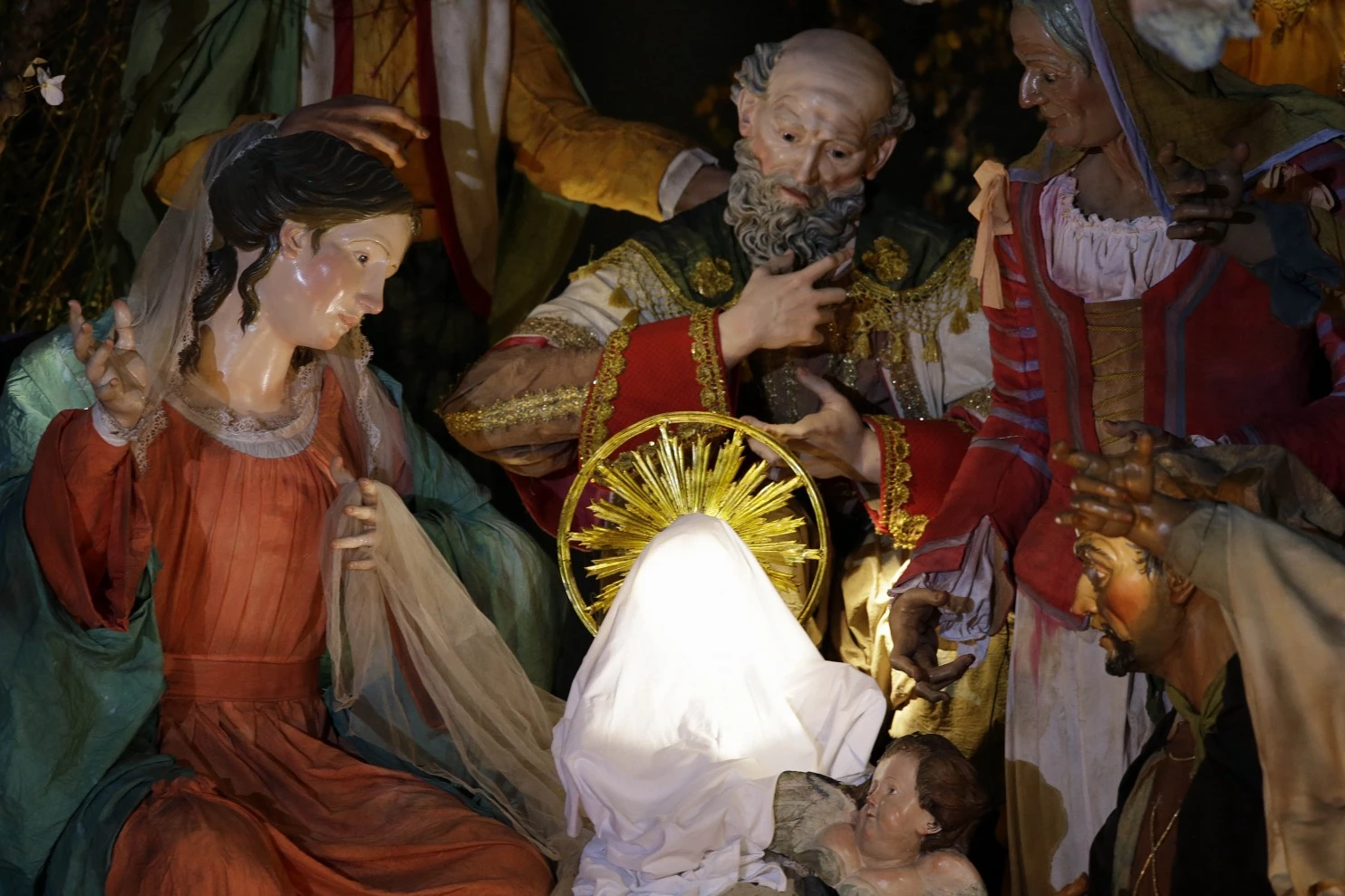Did historical Jesus really exist? The evidence just doesn’t add up (Raphael Lataster)
Did a man called Jesus of Nazareth walk the earth? Discussions over whether the figure known as the “Historical Jesus” actually existed primarily reflect disagreements among atheists. Believers, who uphold the implausible and more easily-dismissed “Christ of Faith” (the divine Jesus who walked on water), ought not to get involved. By Raphael Lataster Numerous secular scholars have presented their own versions of the so-called “Historical Jesus” – and most of them are, as biblical scholar J.D. Crossan puts it, “an academic embarrassment.” From Crossan’s view of Jesus as the wise sage, to Robert Eisenman’s Jesus the revolutionary, and Bart Ehrman’s apocalyptic prophet, about the only thing New Testament scholars seem to agree on is Jesus’ historical existence. But can even that be questioned? The first problem we encounter when trying to discover more about the Historical Jesus is the lack of early sources. The earliest sources only reference the clearly fictional Christ of Faith. These early sources, compiled decades after the alleged events, all stem from Christian authors eager to promote Christianity – which gives us reason to question them. The authors of the Gospels fail to name themselves, describe their qualifications, or show any criticism with their foundational sources – which they also fail to identify. Filled with mythical and non-historical information, and heavily edited over time, the Gospels certainly should not convince critics to trust even the more mundane claims made therein. The methods traditionally used to tease out rare nuggets of truth from the Gospels are dubious. The criterion of embarrassment says that if a section would be embarrassing for the author, it is more likely authentic. Unfortunately, given the diverse nature of Christianity and Judaism back then (things have not changed all that much), and the anonymity of the authors, it is impossible to determine what truly would be embarrassing or counter-intuitive, let alone if that might not serve some evangelistic purpose. The criterion of Aramaic context is similarly unhelpful. Jesus and his closest followers were surely not the only Aramaic-speakers in first-century Judea. The criterion of multiple independent attestation can also hardly be used properly here, given that the sources clearly are not independent. Paul’s Epistles, written earlier than the Gospels, give us no reason to dogmatically declare Jesus must have existed. Avoiding Jesus’ earthly events and teachings, even when the latter could have bolstered his own claims, Paul only describes his “Heavenly Jesus.” Even when discussing what appear to be the resurrection and the last supper, his only stated sources are his direct revelations from the Lord, and his indirect revelations from the Old Testament. In fact, Paul actually rules out human sources (see Galatians 1:11-12). Also important are the...
New research exposes hidden relationship between Jesus and John the Baptist (D.M Murdock)
The biblical story of Jesus Christ and the mysterious John the Baptist has fascinated millions of people for nearly 2,000 years. The tale also has mystified scholars because of its supernatural and mystical peculiarities, including the motif of God the Father’s booming voice from heaven and a magical white dove descending upon the baptized Christ. Like Jesus and his immediate disciples, John the Baptist is missing from the contemporary historical record, and the evidence points to him as a mythical archetype, not a historical person. This “mythicist” view allows for the unraveling of the mysteries surrounding this strange figure and his relationship to Jesus as depicted in the New Testament and elsewhere. By D.M Murdock (aka Acharya S) John is called not only “Baptist” for his role in purifying Christ but also the “Forerunner,” as he preceded Jesus in time and importance, setting the stage for the coming messiah. In this role, it turns out, the Baptist/Purifier/Forerunner is not unique; nor is his use of water to impart righteousness and holiness. Oannes the Water God Indeed, in the very region where the Baptist was said to thrive and where post-Christian sects revered him more than Jesus, east of the Jordan into Mesopotamia, there was worshipped for thousands of years a water god called by various names, including Ea, Adapa and Uanna. In fact, the Greek rendering of the aqueous Sumero-Babylonian god Uanna, Oannes (Ὡάννης), is essentially the same as Ioannes (Ἰωάννης) or “John” in the Greek of the New Testament. This ancient Babylonian deity had been discussed in some detail by the priest Berosus in the third century BCE, reflecting his continued importance to the people of what is now Iraq, as Oannes was said to have emerged from the Persian Gulf there many thousands of years ago to bring civilization. Oannes’s role as water god is an indication also of his solar nature, as his emergence from the sea occurred at sunrise on a daily basis. This solar nature is important to keep in mind as we discuss the later aquatic figure of Ioannes/John the Baptist. Mandeans and Nasoreans Mesopotamian peoples thus were fervent Oannes devotees for many centuries, into the common era, when their devotion was Christianized, and they became known as “Mandaean Christians,” from the Babylonian-Aramaic term mndaya, meaning “gnostic.” As the Catholic Encyclopedia says of the Mandaeans/Mandeans, also known as “Nasoraeans“: Another name also found in their sacred books is that of Sabians (sbya) which means Baptists (sb‘ to baptize in Syriac and Aramaic)…. It is based on the prominence of frequentbaptism in their religious discipline and hence they are no doubt referred to by the Fathers as Hemerobaptists‘emerobaptístai i.e. practising daily baptism…. The name, however, most frequently used in their...
Newly discovered ancient Christian magical spell reveals Egyptian influence (by D.M Murdock)
Newly discovered ancient Christian magical spell reveals Egyptian influence (by D.M Murdock/ Acharya S) An ancient Christian magical spell or charm from the sixth century has been found in an old papyrus manuscript housed at the John Rylands Library in Manchester, England. The discoverer, Dr. Roberta Mazza, believes the Greek charm, originally unearthed in Egypt, was part of an amulet to be worn or carried as protection, as reported by Phys.org: The remarkable document uniquely contains some of the earliest documented references to the Last Supper and ‘manna from heaven’. It is the earliest surviving document to use the Christian Eucharist liturgy – which outlines the Last Supper – as a protective charm…. It shows how Christians adopted the ancient Egyptian practice of wearing amulets to protect the wearer against dangers. This practice of writing charms on pieces of papyrus was continued by the Christians who replaced the prayers to Egyptian and Greco-Roman gods with extracts from the Bible…. The document had been held at the library since around 1901, but its significance had not been realized until Dr Mazza spotted it. She said: ‘This is an important and unexpected discovery as it’s one of the first recorded documents to use magic in the Christian context and the first charm ever found to refer to the Eucharist – the last supper – as the manna of the Old Testament. The text of the amulet is an original combination of biblical passages including Psalm 78:23-24 and Matthew 26:28-30 among others. ‘To this day, Christians use passages from the bible as protective charms so our amulet marks the start of an important trend in Christianity…. ‘It’s doubly fascinating because the amulet maker clearly knew the Bible, but made lots of mistakes: some words are misspelled and others are in the wrong order. This suggests that he was writing by heart rather than copying it. ‘It’s quite exciting. Thanks to this discovery, we now think that the knowledge of the Bible was more embedded in sixth century AD Egypt than we previously realized.’… The full text of the papyrus: Fear you all who rule over the earth. Know you nations and peoples that Christ is our God. For he spoke and they came to being, he commanded and they were created; he put everything under our feet and delivered us from the wish of our enemies. Our God prepared a sacred table in the desert for the people and gave manna of the new covenant to eat, the Lord’s immortal body and the blood of Christ poured for us in remission of sins. Despite such discoveries demonstrating the relationship between...
Did the historical Jesus exist? A growing number of scholars don’t think so
Most antiquities scholars think that the New Testament gospels are “mythologized history.” In other words, they think that around the start of the first century a controversial Jewish rabbi named Yeshua ben Yosef gathered a following and his life and teachings provided the seed that grew into Christianity. By Valerie Tarico At the same time, these scholars acknowledge that many Bible stories like the virgin birth, miracles, resurrection, and women at the tomb borrow and rework mythic themes that were common in the Ancient Near East, much the way that screenwriters base new movies on old familiar tropes or plot elements. In this view, a “historical Jesus” became mythologized. For over 200 years, a wide ranging array of theologians and historians—most of them Christian—analyzed ancient texts, both those that made it into the Bible and those that didn’t, in attempts to excavate the man behind the myth. Several current or recent bestsellers take this approach, distilling the scholarship for a popular audience. Familiar titles include Zealot by Reza Aslan and How Jesus Became God by Bart Ehrman. But other scholars believe that the gospel stories are actually “historicized mythology.” In this view, those ancient mythic templates are themselves the kernel. They got filled in with names, places and other real world details as early sects of Jesus worship attempted to understand and defend the devotional traditions they had received. The notion that Jesus never existed is a minority position. Of course it is! says David Fitzgerald, author of Nailed: Ten Christian Myths That Show Jesus Never Existed at All . For centuries all serious scholars of Christianity were Christians themselves, and modern secular scholars lean heavily on the groundwork that they laid in collecting, preserving, and analyzing ancient texts. Even today most secular scholars come out of a religious background, and many operate by default under historical presumptions of their former faith. Fitzgerald is an atheist speaker and writer, popular with secular students and community groups. The internet phenom, Zeitgeist the Movie introduced millions to some of the mythic roots of Christianity. But Zeitgeist and similar works contain known errors and oversimplifications that undermine their credibility. Fitzgerald seeks to correct that by giving young people interesting, accessible information that is grounded in accountable scholarship. More academic arguments in support of the Jesus Myth theory can be found in the writings of Richard Carrier and Robert Price. Carrier, who has a Ph.D. in ancient history uses the tools of his trade to show, among other things, how Christianity might have gotten off the ground without a miracle. Price, by contrast, writes from the perspective of a theologian whose biblical scholarship ultimately formed the basis for his skepticism. It is interesting to note that some of the harshest debunkers...
Offering Classes on Historical Method and the Historicity of Jesus (by Richard Carrier)
I am still teaching the science and philosophy of free will this June (that class starts next week; you can register here). But now my courses for July and August are also open for early registration (and there is a limit on how many students I take on per class, so they might fill up; I will offer them again next year). By Richard Carrier For July (and this in preparation for August) I will be teaching a course on historical methods: Thinking Like a Historian: Historical Methods, Practice and Theory (details and registration here). Description: Learn how to question and investigate claims about history. Study not only the logic of historical reasoning and argument, but also a lot of the practical tips and tricks real historians employ to test and check claims. Learn the particular skills of skeptical and critical thinking about history. Primary topics: Best practices among historians; historical methods as modes of reasoning (both criteria-based and Bayesian); examples of flawed reasoning and bad arguments in peer reviewed history journals and monographs (and how to spot them as a layperson); and what to do to critically examine a claim using both immediate heuristics and procedures for more labor-intensive inquiry. The required course text we will be working through chapter by chapter is Proving History: Bayes’s Theorem and the Quest for the Historical Jesus, but I will be providing additional readings and discussion across several fields and subjects in history (the focus won’t be wholly or even mostly on Jesus; that will just be a working example). -:- For August (and this will benefit from having taken the preceding course in July) I will be teaching a course on the historicity of Jesus: Questioning or Defending the Historicity of Jesus (details and registration here). Description: This course discusses the best arguments for and against the historical existence of Jesus (as the putative founder of Christianity), and we will proceed step-by-step through ways to approach them and evaluate them. Working from the first peer reviewed academic book arguing Jesus might not have existed, taught by the author himself, you will learn how to distinguish good arguments from bad, and about the background and context of the origins of Christianity as a whole. This is the best opportunity to ask Dr. Carrier, who holds a PhD in ancient history from Columbia University, all your questions about his controversial research and the historical(?) figure of Jesus. Main issues to cover: understanding the complex background to the origins of Christianity (unit 1, OHJ chs. 4, 5, & 7); comparing the competing theories of how and why Christianity began (unit 2,...
Is the Vatican in shock over a ‘newly discovered’ Bible that says Jesus wasn’t crucified? (by D.M Murdock)
Many people have been circulating this supposed “news,” which isn’t new at all. Nor is the Vatican “shocked” by an old Syriac Bible purportedly from 1,500 years ago. There is nothing new in the Bible that the Vatican’s scholars and other experts have not known about for the past 18 centuries or so. By D.M Murdock (aka Acharya S) To begin with, Christian apologists rebut that the so-called Ankara Bible evidently is not 1,500 years old but may date from 1500 AD/CE at the earliest, while also contending that the book may be a “forgery.” In reality, this particular book may not be as ancient as is claimed, but its doctrines were not fabricated at that time. Indeed, the Ankara Bible’s “strange” doctrines of Jesus not being crucified and other peculiarities are simply a rehash of one of the many strains of Christianity that thrived from the second century AD/CE onward. This Syrian-Arab Christian perspective thus has been around for many centuries, since antiquity, based on the apocryphal Gospel of Barnabas and other such noncanonical texts. The contents of the Gospel of Barnabas include the following: It generally resonates better with existing Muslim views than with Christianity: it foretells the coming of Muhammad by name; rather than describing the crucifixion of Jesus, it describes him being raised up into heaven, similar to the description of Elijah in 2 Kings, Chapter 2; and it calls Jesus a “prophet” whose mission was restricted to the “house of Israel”. The ‘name’ Muhammad As concerns the claim that Barnabas “names” Muhammad/Mohammed, that title simply means “praised” or “praiseworthy,” so any book that includes the Arabic word for “praiseworthy” as an epithet could be said to be “predict Mohammed.” In other words, “Mohammed” is simply a title that could be applied to many people and probably was, long before a historical Mohammed supposedly existed. In this regard, it is also claimed that the name “Mohammed” was included in the Hebrew Bible or Old Testament/Tanakh, at Song of Songs 5:16, which represents a love song about the singer’s “beloved”: His speech is most sweet, and he is altogether desirable. This is my beloved and this is my friend, O daughters of Jerusalem. The Hebrew word here for “desirable” is מחמד machmad, a term Muslim apologists contend is the “prediction” of Mohammed as well. Neither the Bible nor the Barnabas gospel “predicts Mohammed,” however. If anything, Mohammed is a fictional compilation of characters, and Song of Songs 5, the Barnabas gospel and other apocryphal texts were used to create him, as was done with Moses and Jesus before him. In reality, the ideas in Barnabas...










